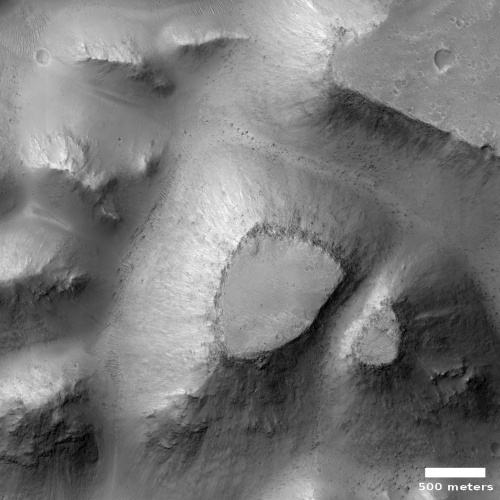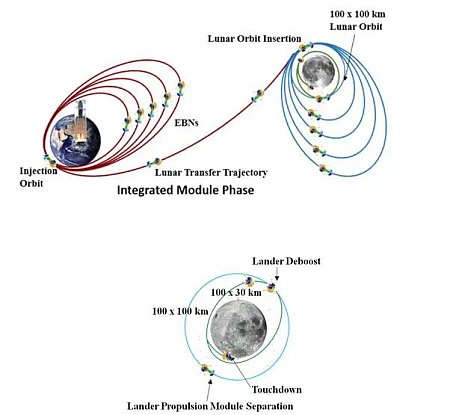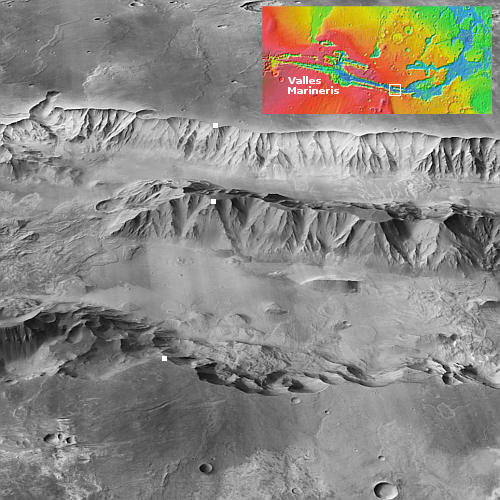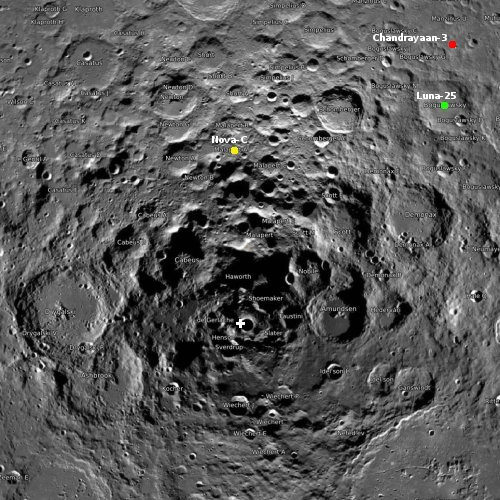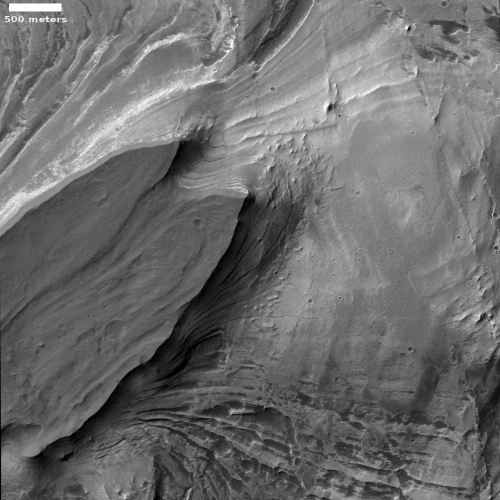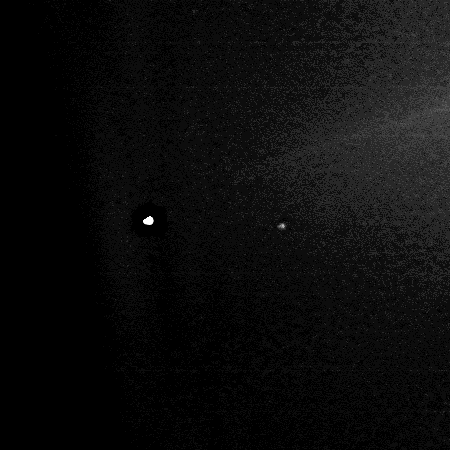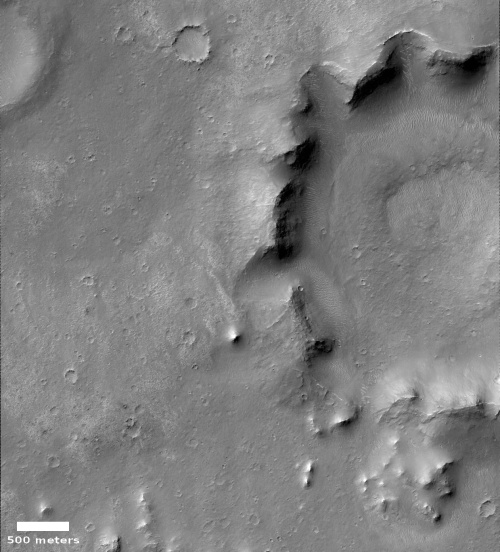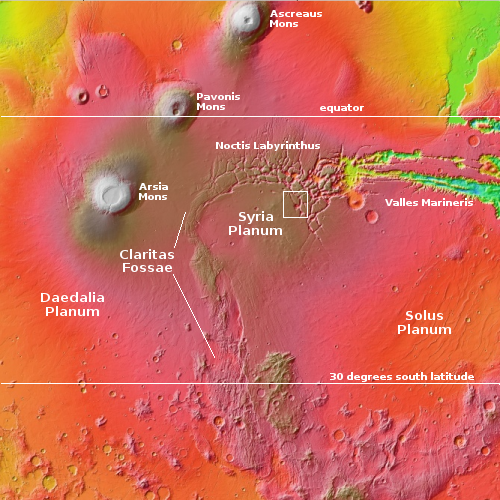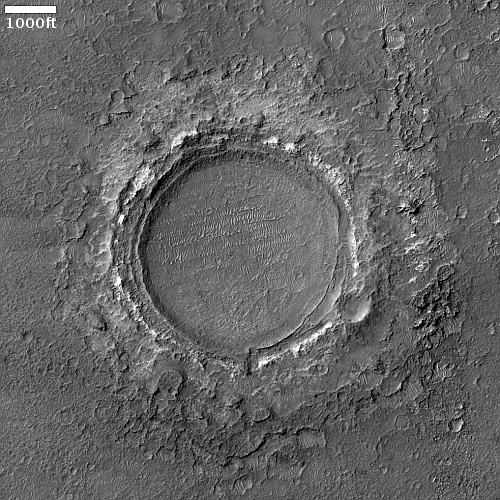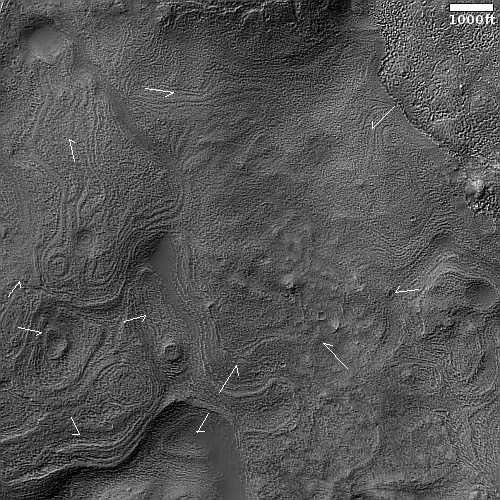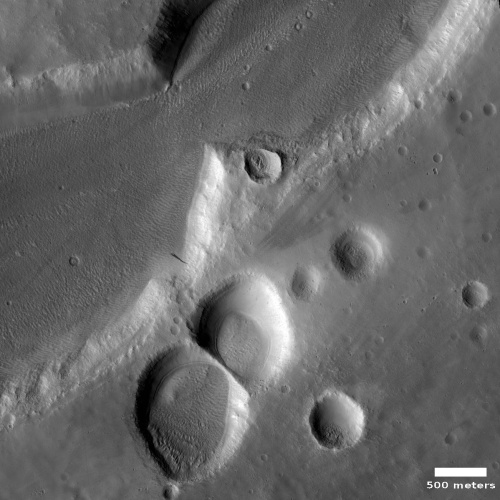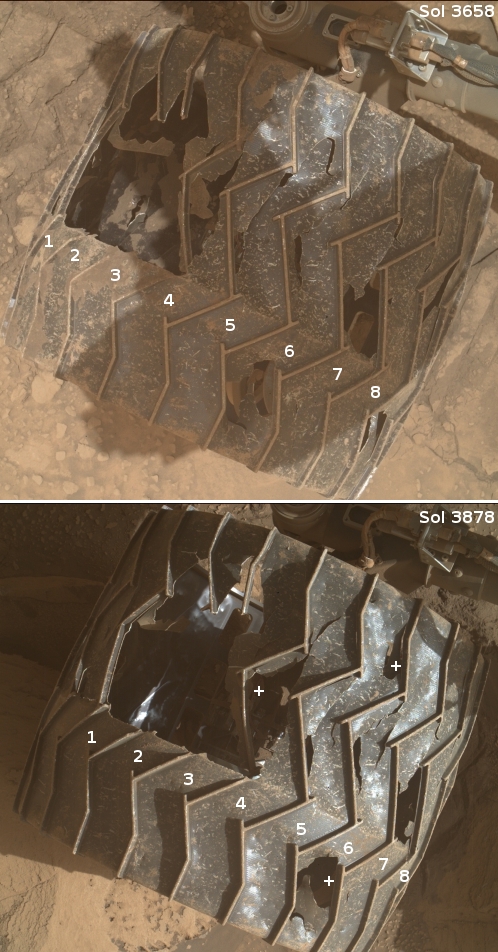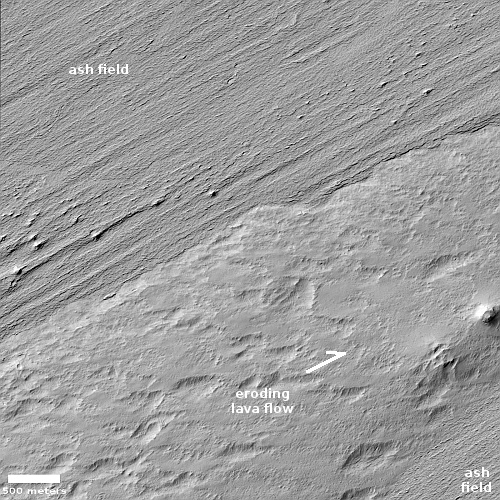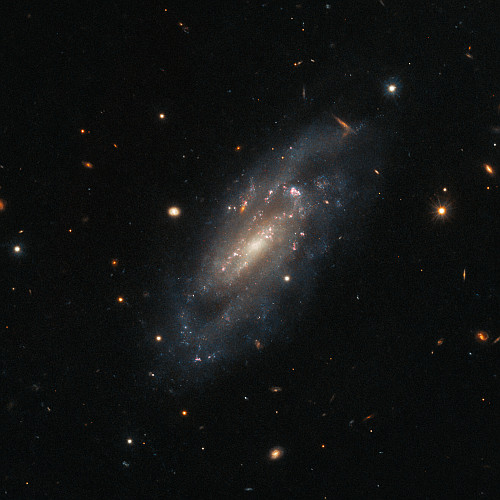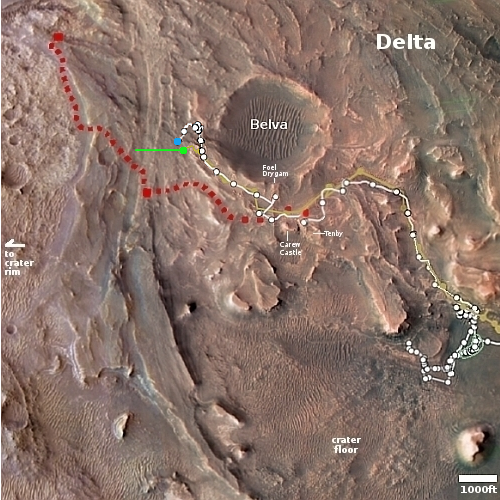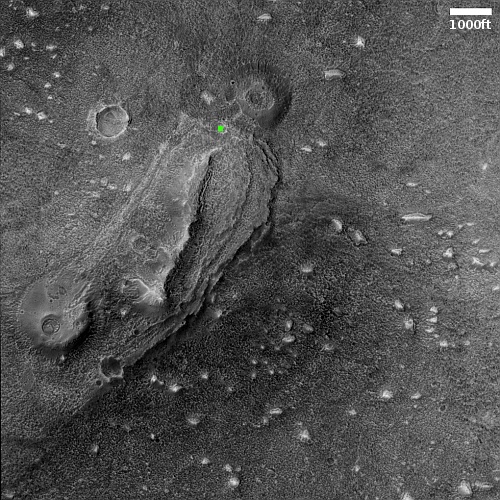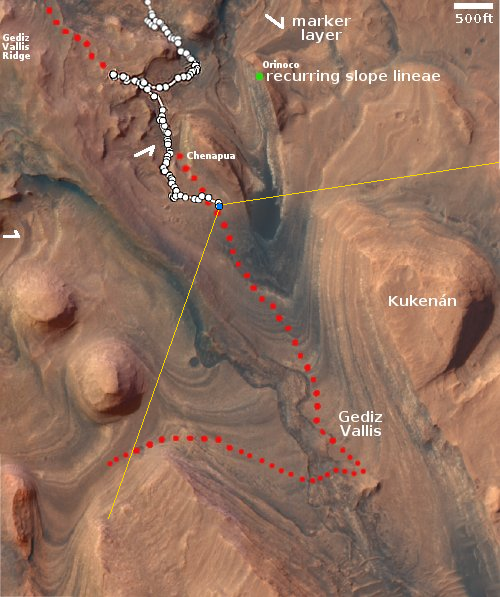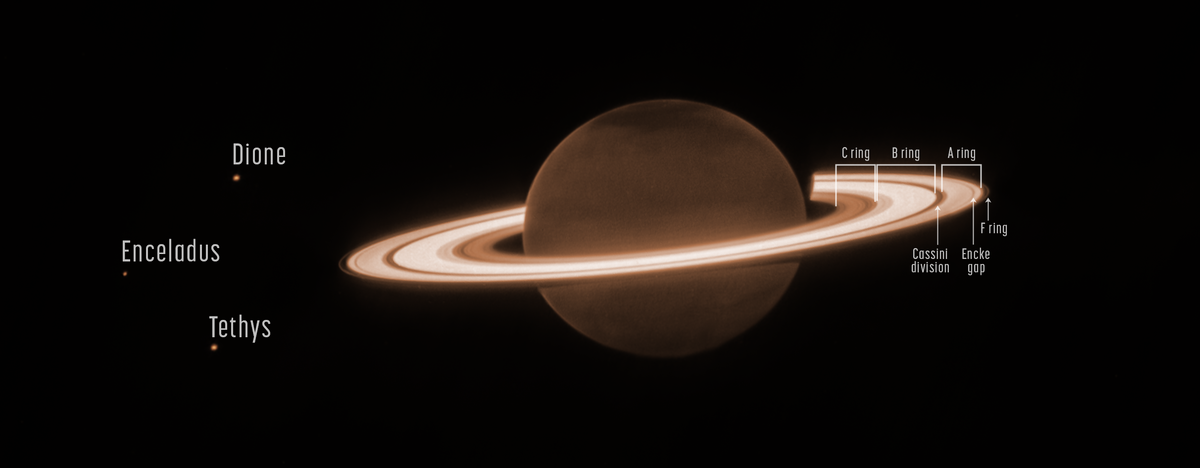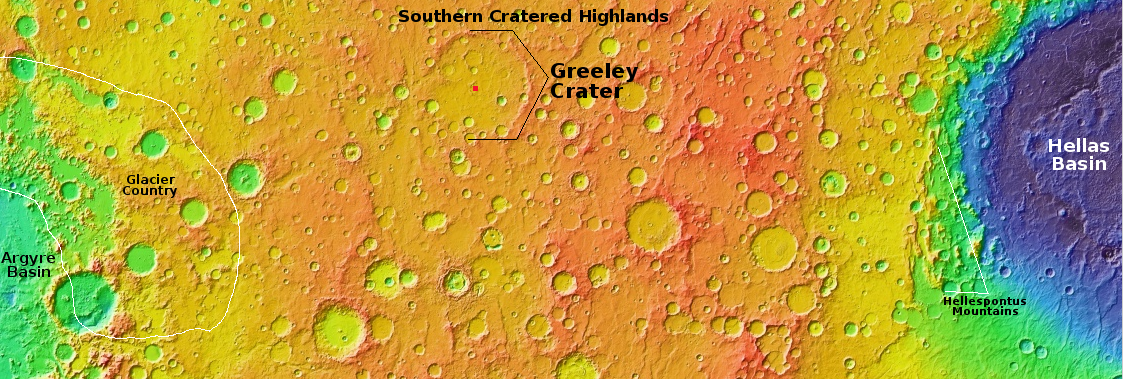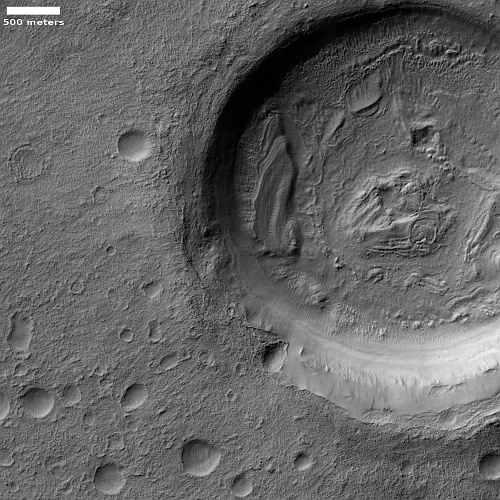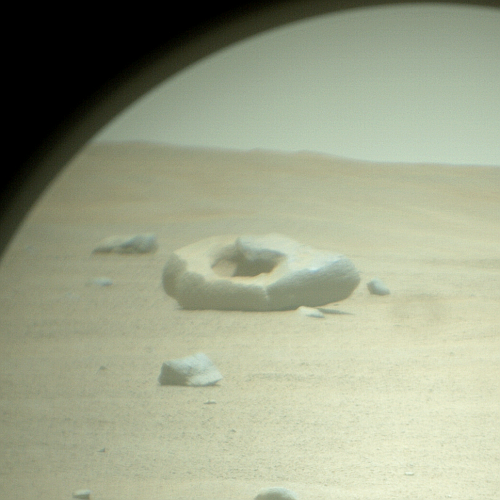Ancient lava vent high on a Martian volcano
Today’s cool image illustrates the once violent and active volcanic past of Mars, now long dormant. The picture to the right, cropped, reduced, and sharpened to post here, was taken on May 11, 2023 by the high resolution camera on Mars Reconnaissance Orbiter (MRO). It shows what the scientists label as a “vent and channel” located high on the northeast flanks of the giant volcano Arsia Mons.
The rim around the vent suggests that lava had once bubbled up out of the vent and hardened around it, as most of the lava flowed downhill along the channel. And though this vent appears to be the source of this channel, it is not. The channel continues to the southwest uphill until it reaches the edge of Arsia Mons’ caldera, a region where there are many such vents, many much larger and deeper than this one.
» Read more
Today’s cool image illustrates the once violent and active volcanic past of Mars, now long dormant. The picture to the right, cropped, reduced, and sharpened to post here, was taken on May 11, 2023 by the high resolution camera on Mars Reconnaissance Orbiter (MRO). It shows what the scientists label as a “vent and channel” located high on the northeast flanks of the giant volcano Arsia Mons.
The rim around the vent suggests that lava had once bubbled up out of the vent and hardened around it, as most of the lava flowed downhill along the channel. And though this vent appears to be the source of this channel, it is not. The channel continues to the southwest uphill until it reaches the edge of Arsia Mons’ caldera, a region where there are many such vents, many much larger and deeper than this one.
» Read more



